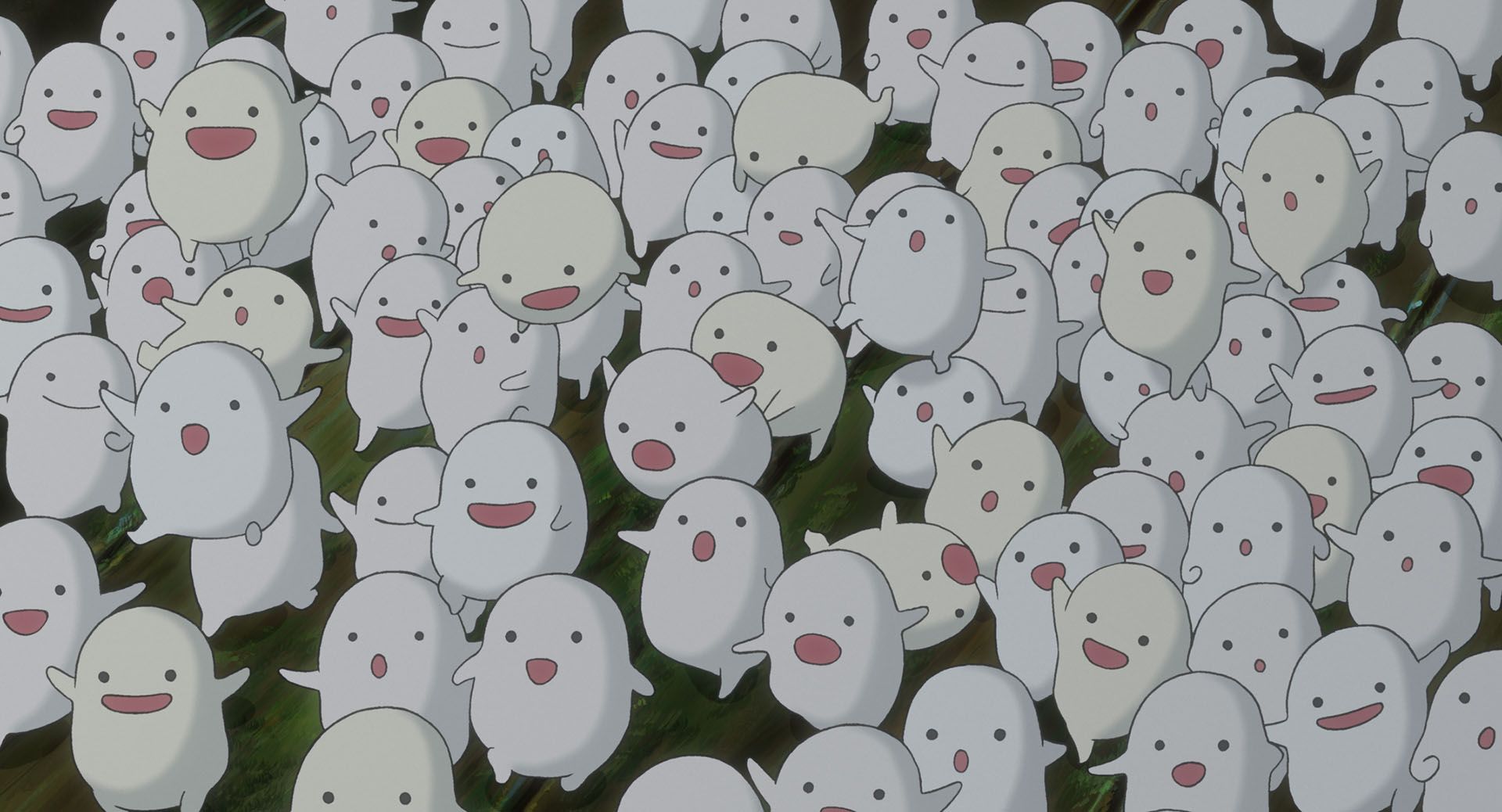
Steamed Buns & Bento Boxes: Our Top Studio Ghibli Fest 2025 Foods
Written by on Apr 18, 2025 12:03 PM
Ham, Ham, HAAAAAAM! For 40 years, Studio Ghibli has captivated the imaginations of viewers through immersive realism, offering compelling and effective stories that helped breathe life into animation. To quote Miyazaki:
“Anime may depict fictional worlds, but I nonetheless believe that at its core it must have a certain realism. Even if the world depicted is a lie, the trick is to make it seem as real as possible. Stated another way, the animator must fabricate a lie that seems so real viewers will think the world depicted might possibly exist. [1]”
This dedication to worldbuilding has not only created endearing characters and compelling plots, but decadent foods that look so tasty they make your mouth water. These steaming bowls of noodles, sizzling meats, and delectable desserts provide a sense of community for the inhabitants and reveal important details about their environment, helping place viewers into these fantastical worlds.
With the legendary studio celebrating its 40th anniversary, we grabbed our bento boxes, found our favorite HAAAAAM loving goldfish, and dove into the irresistible foods found in this year’s festival.
Herring and Pumpkin Pie – Kiki’s Delivery Service
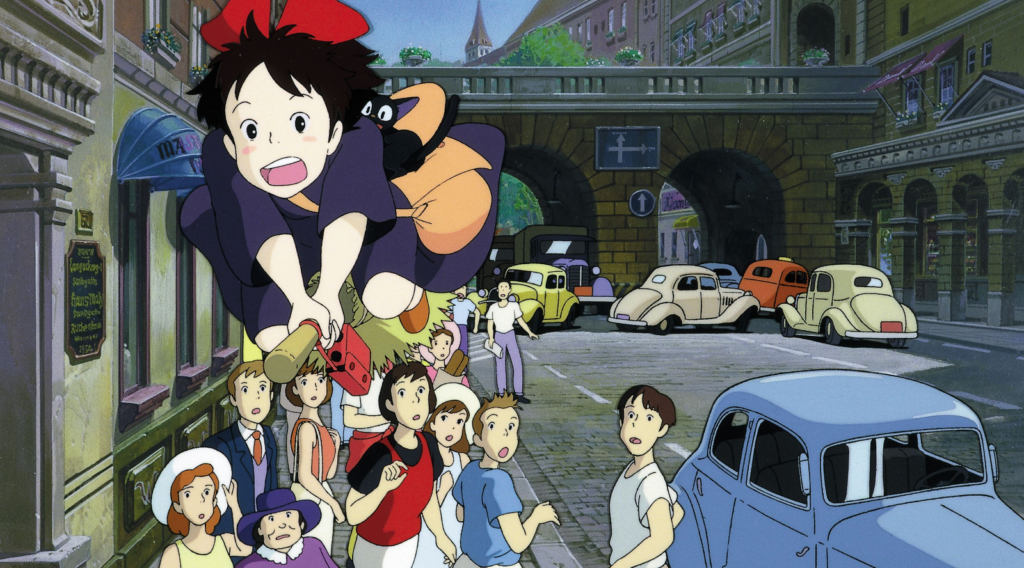
Out of all the deliveries our favorite witch-in-training makes, the herring and pumpkin pie is our personal favorite. Not only does it look absolutely inviting – with a beautiful pie crust, neatly decorated with a fish in the center, and accented by fresh olives around the edges – the story behind it provides a valuable life lesson.
In the scene, Kiki meets an elderly woman named Madame, who needs help baking a new pie for her granddaughter’s birthday party. Kiki kindly helps, and the pair begin to make a new one from scratch – connecting as they struggle to finish it on time. Once complete, the pie looks delicious, and Kiki rushes off in the rain to deliver it. Upon arrival, she is greeted by the ungrateful granddaughter who looks at it in disgust before closing the door in Kiki’s face.
This moment is one of the rare times Hayao Miyazaki has used food to signify rejection. We experienced all the love and hard work that went into making the pie, only to be left in the cold. Overall, the herring and pumpkin pie symbolized a growing moment for Kiki, who saw through the immaturity of someone around her age and learned why you should be kind and grateful for the people in your life.
Cream Stew – The Secret World of Arrietty
Beneath the soft cozy details of a world hidden away under the floorboards, Hiromasa Yonebayashi’s The Secret World of Arrietty is a film filled with delicate and intentional food that helps shape the world our characters inhabit. These meals may seem small, but they act as a way to illustrate the tensions between visibility and vulnerability – themes that are explored throughout the story, as the Borrowers dance between being caught by the humans and discovering who they are. One dish in particular stands out as not only being visually stunning, but an important moment for our Borrower family.
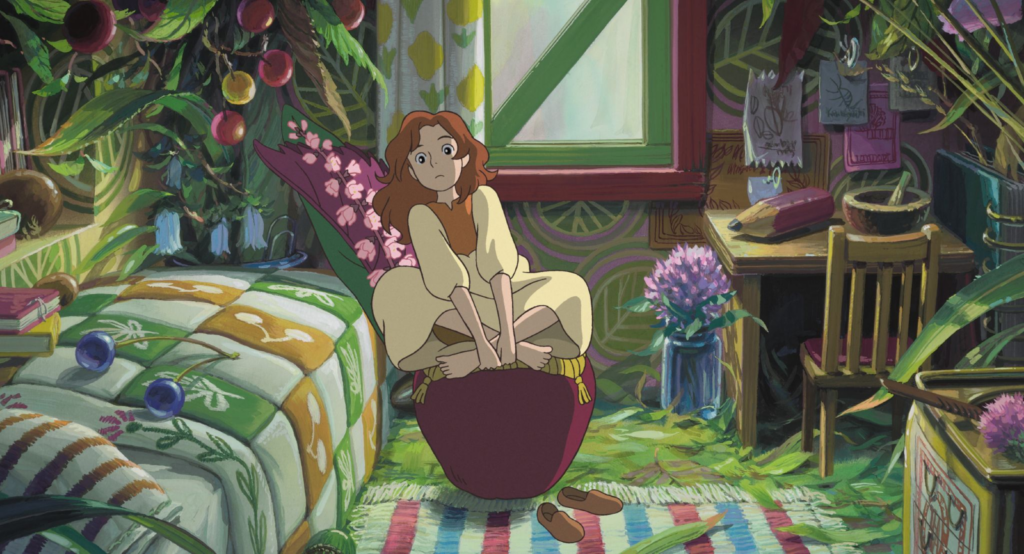
The cream stew cooked by Arrietty’s mother is an iconic comfort food from Japan – often made with carrots, potatoes, onions, and tender chicken or seafood – the meal symbolizes the warmth of home for the family. Yonebayashi allows the audience to connect to the characters through this dish as we see all the “borrowed” ingredients bubbling with life, making their tiny existence feel incredibly large and important.
Bento Box – My Neighbor Totoro
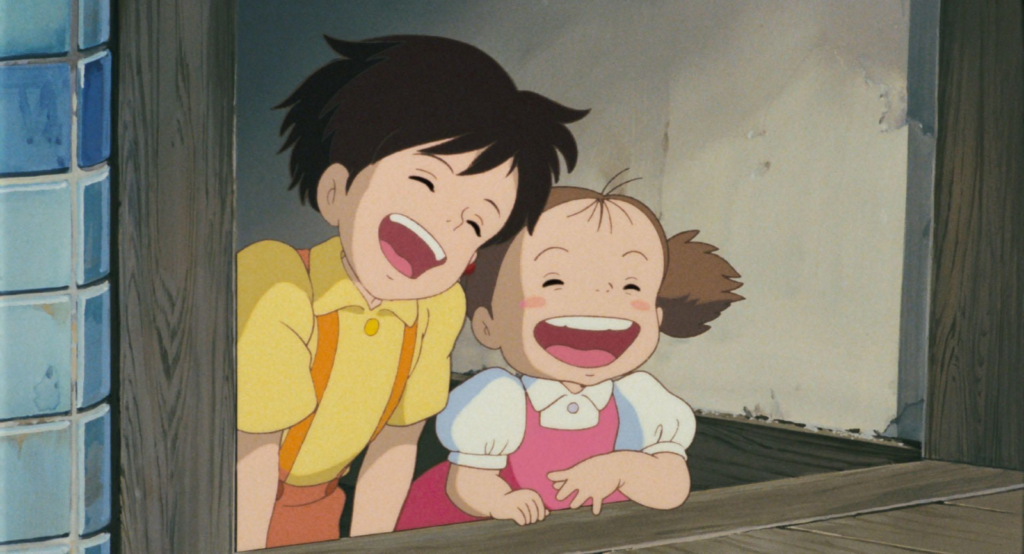
Arguably the most iconic film from Studio Ghibli, My Neighbor Totoro follows the story of two sisters and their father as they settle into a new rural home to be closer to their sick mother. While food isn’t presented as visually complex, there is one meal that Miyazaki uses to encapsulate the love the family has for each other – a dish that is a staple of rural Japanese culture: the bento box.
Satsuki wakes up early to make lunch for her father and Mei before running off to school. We see several pots bubbling and steaming away as the fluffy rice, sakura denbu, edamame, umeboshi, and shishamo fill each of the bento boxes. The care and dedication Satsuki puts into making these meals demonstrates how much she loves her family and the responsibilities she’s been forced to take on.
The bento box has always been a food for the working class of Japan – dating back as far as the 12th century – and Miyazaki injects that cultural aesthetic of balance and convenience into this scene. We see the unbreakable bond the sisters have with each other and get a glimpse into what magical adventures are in store for them.
Sakuma Drops – Grave of Fireflies

It’s hard to imagine what Isao Takahata’s heart-wrenching film, Grave of the Fireflies would be without Setsuko’s little red tin of Sakuma Drops. These fruit-flavored hard candies are staples of Japanese culture and considered the oldest surviving confectionery product in the country. With its simple, classic flavors such as Lemon, Apple, Strawberry, Orange, and Pineapple the product is a childhood sweet which Takahata masterfully used to connect us to the main characters in the film.
Seita and Setsuko – the two siblings we follow throughout the story – enjoy a Sakuma Drop when they can, acting as a source of comfort and love during these hard times. While they aren’t the most complex food on this list, their ability to strike a nostalgic chord with viewers makes them a potent symbol.
Ramen with HAAAM – Ponyo

Ham, Ham, HAAAM! From the moment our favorite goldfish tastes the salty yumminess that is ham, she falls completely in love. It leads her to discover our favorite food from the film: ramen. Ramen is more than just a comfort food; it’s a symbol of Japanese culture – representing a fusion of different culinary traditions. The act of slurping noodles, those perfectly soft-boiled eggs, and the inviting broth are reflections of community and connection, something Miyazaki masterfully injects into Ponyo.
In this famous food scene, Ponyo, Sosuke, and his mother make the dish using instant ramen, thick slices of ham, chopped scallions, and a soft-boiled egg. The moment acts as a way for Ponyo to connect with humans, leading to her squealing in delight as she devours a perfect bowl of ramen, eventually falling asleep satisfied and happy.
Calcifer Breakfast – Howl’s Moving Castle
Few food scenes in the collective works of Studio Ghibli have the same charm and character growth as the breakfast in Howl’s Moving Castle. Cooked by our favorite bacon-burning fire spirit Calcifer, our resident drama queen Howl, and Sophie – the sequence masterfully highlights the dynamics between each of the characters. As those thick slices of bacon and sunny-side eggs cook we see the strong-will of Sophie – who looks to clean up the disastrous state of the castle – the uneasiness and uncertainty of Howl, and the rebellious-but-kind heart of Calcifer.

These personalities may be different, but they will end up complementing each other as the story progresses, and Hayao Miyazaki introduces them over bacon and eggs.
Onigiri – Spirited Away
Out of all the titles in this year’s Studio Ghibli Fest, Spirited Away is by far the most food-centric one of them all – with almost every scene featuring sumptuous feasts. The story begins with a family finding an abandoned amusement park, wandering into empty stalls with piles of shimmering sausages, rice cakes, and roasted meats. Chihiro, the main protagonist of the film, is apprehensive and urges her parents to leave, but they succumb to their gluttony. This sets in motion Chihiro’s journey through Yubaba’s Bathhouse for the Spirits and her mission to save them.
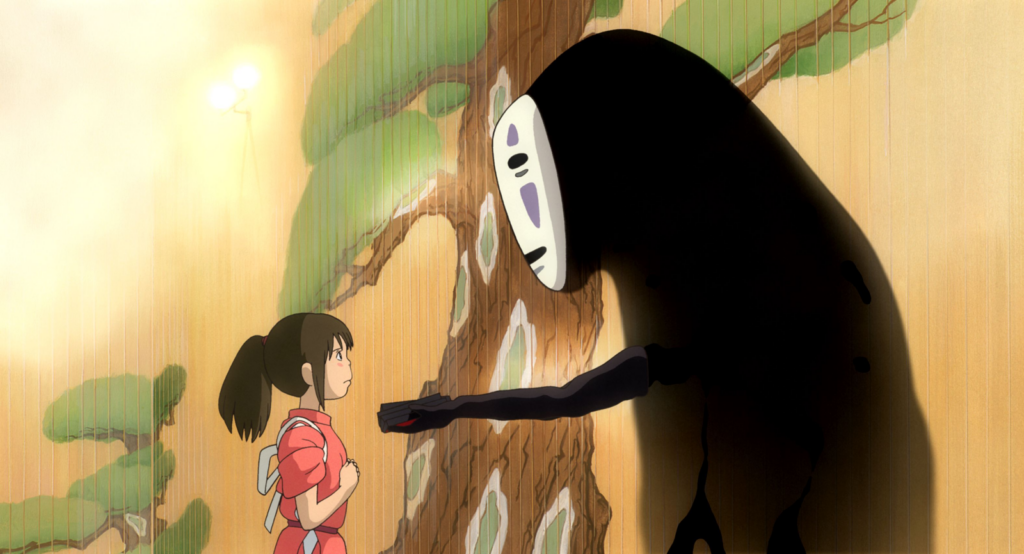
Our favorite food scene comes only a few minutes after, when Chihiro is helped through the chaotic and foreign world she finds herself in by Haku. Haku offers Chihiro a distinctly simple Japanese food called Onigiri. The inviting rice ball shaped into a triangle and filled with tuna and mayonnaise is a beloved dish that represents family and tradition. When Chihiro bites into it she immediately begins to cry, highlighting not only her vulnerabilities but reminding her of home. We are introduced to the complexities of her character and what she must do to survive in her new surroundings over Onigiri.
Jam Bread – The Boy and the Heron

The Boy and the Heron is one of Miyazaki’s most layered and introspective films – exploring the dreamlike meditation on grief, memory, and the process of growing up. Much like other Studio Ghibli titles on this list, food is used to align us to the main character’s story, and the one that sticks out the most is the jam bread.
Presented to Mahito, the main protagonist, by Himi – a powerful fire maiden and avatar of his deceased mother – the scene acts as a way of easing his journey through the land of the dead in search of his mother. The globs of sweet jam on freshly baked slices of bread are comforting and familiar to him, reinforcing their bond. This contrasts the harsh realities of the other world that Mahito is experiencing and why he must continue.
The Magic of Studio Ghibli Food
Food is often used to connect us to the emotional fabric of each story – bringing the characters together, anchoring the fantastic world they inhabit, and reminding us of what truly matters. Whether it’s a slice of jam-covered bread shared in a quiet moment of grief, a bubbling pot of cream stew in a hidden corner of the world, or a lovingly packed bento eaten under the sun, the meals of Studio Ghibli always remind us that food is never just food.
Sign up for our newsletter to keep up to date with all our screenings.



"*" indicates required fields